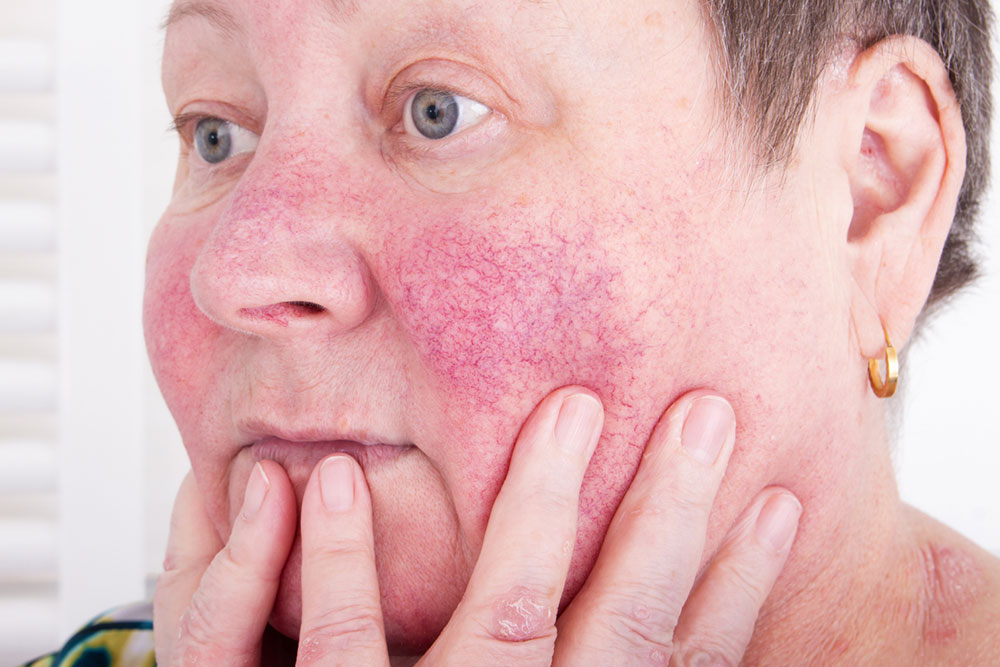
Rosacea – Types, treatments, and prevention
Rosacea is a chronic skin disorder characterized by small and red bumps on the skin, especially of the skin surfaces of cheeks, forehead, and nose. These bumps are filled with pus and cause pain and discomfort to the affected individual. According to one estimate, approximately 16 million people in the country suffer from rosacea. The causes of rosacea are not yet fully understood and there is no permanent cure either. The symptoms of rosacea are often cyclical and remain for a few weeks or months before they disappear.
Types
Rosacea is broadly categorized into the following four types:
- Subtype one
It is also known as erythematotelangiectatic rosacea or ETR. In ETR, the bumps typically appear on the facial area causing redness and flushing. The blood vessels are visible. - Subtype two
It is called acne or papulopustular rosacea and generally affects middle-aged women and is characterized by acne-like structures on the skin. - Subtype three
It is called rhinophyma and is one of the rare types of rosacea. It causes thickening of the skin of the nose, typically affects men, and often comes with other types of rosacea. - Subtype four
This type of rosacea affects the skin around the eye and called ocular rosacea.
Treatments
The treatment of rosacea depends on the type of rosacea and the intensity of the symptoms.
- Medications
Medications are used to reduce the redness of the affected area. Certain medicines are applied on the skin as a gel and they cause the constriction of blood vessels, thereby reducing the redness. These drugs typically show effect within 12 hours of application. However, the medication works temporarily and hence a regular application of the gel over the affected area is required. - Antibiotics
Antibiotics are prescribed to reduce the chances of infection and also reduces inflammation. Antibiotics are taken as a pill and work in cases of both severe and moderate rosacea. - Isotretinoin
It is a very powerful treatment option for severe rosacea and used in cases where traditional therapies do not work. It is a strong acne medication and clears acne-like symptoms of rosacea. It is important to note here that this drug should not be used by pregnant women because it can cause serious birth defects in the new-born.
Preventive measures
Apart from above-mentioned treatment options, certain preventive measures which can prevent the worsening of the symptoms are as follows:
- Avoid triggers that can stimulate the flare-ups of rosacea.
- Handle your skin with the utmost gentleness. Do not rub or scratch the skin or affected area. Often apply a moisturizer to prevent the dryness of the skin. Refrain from products which contain irritants or alcohol.
- Application of broad-spectrum sunscreen (SPF of 30 or more) can be helpful. Avoid weather conditions like cool or windy weather.
Rosacea is a skin disorder in which pus-filled bumps appear on various parts of the skin. Rosacea can be managed with the help of certain medications but has no permanent cure. Avoiding certain triggering factors can also be beneficial in the proper management of rosacea.


